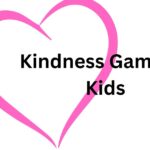Introduction: Why Kindness Matters in Preschool
In a preschool classroom, kindness isn’t just a bonus; it’s a foundation for learning, sharing, and growing together. When young children learn to be kind, they’re not just following directions; they’re discovering how their words and actions affect others. These early experiences shape empathy, cooperation, and a sense of belonging, skills that ripple through every part of school life.
Teaching kindness in preschool isn’t about grand gestures. It’s about small, everyday moments, helping a friend zip their backpack, saying thank you, or drawing a picture for someone who feels sad. These moments teach big lessons in understanding, respect, and care.
Tips for Teaching Kindness to Preschoolers
- Choose a Clear Teaching Purpose
Before starting a kindness activity, decide what lesson you want your students to learn. Is it sharing? Patience? Saying kind words? A clear goal helps you guide the conversation and celebrate the right behaviors. - Pick the Right Timing
Kindness lessons work best when children are calm and engaged, not during transition chaos or just before recess. Circle time, story time, or a relaxed morning activity are perfect opportunities to explore kindness together. - Keep Activities Positive, Not a Punishment
Kindness should always feel joyful, not corrective. Avoid turning kindness into a rule for “fixing” bad behavior. Instead, focus on how kindness makes everyone feel good and helps friends stay happy and connected.
Kindness for Preschoolers: 10 Meaningful Ideas
1. Kindness Jar
Let students add a pom-pom to a jar whenever they spot or do a kind act. When the jar is full, celebrate with a special storytime.
- Skill Focus: Positive reinforcement and teamwork
- Book Pairing: Have You Filled a Bucket Today? by Carol McCloud
2. Compliment Circle
During morning circle, invite children to share something nice about a friend. Encourage genuine words like, “You helped me build my tower.”
- Skill Focus: Using kind words and expressing appreciation
- Book Pairing: Words Are Not for Hurting by Elizabeth Verdick
3. Helping Hands Chart
Create a wall chart with children’s names. Each time a student helps another, add a handprint sticker beside their name.
- Skill Focus: Helping others and recognizing kindness
- Book Pairing: The Helping Tree by Shel Silverstein-inspired classroom adaptation
4. Kindness Art Day
Let students draw or paint something that makes others feel happy. Display their artwork on a “Kindness Wall.”
- Skill Focus: Spreading positivity through creativity
- Book Pairing: The Color Monster by Anna Llenas
5. Friendship Bracelets
Provide colorful beads and string. Have children make bracelets for a classmate, teaching them to give and receive with joy.
- Skill Focus: Friendship and generosity
- Book Pairing: A Sick Day for Amos McGee by Philip C. Stead
6. Kindness Song Time
Sing songs that celebrate kindness, such as If You’re Kind and You Know It (to the tune of If You’re Happy and You Know It).
- Skill Focus: Group participation and emotional connection
- Book Pairing: Try a Little Kindness by Henry Cole
7. Clean-Up Heroes
Turn classroom clean-up into a fun mission! Encourage children to help a friend tidy up.
- Skill Focus: Responsibility and cooperation
- Book Pairing: The Berenstain Bears Think of Those in Need by Jan & Mike Berenstain
8. Smile Chain
Encourage students to pass along smiles! Each time a student receives a smile, they “give” it to someone else.
- Skill Focus: Emotional awareness and spreading joy
- Book Pairing: The Smile That Went Around the World by Patrice Karst
9. Kindness in Nature Walk
Take your class on a nature walk. Encourage them to pick up litter (with gloves) or care for plants.
- Skill Focus: Respect for the environment and community care
- Book Pairing: We Are the Gardeners by Joanna Gaines
10. Bible Story Kindness Lesson (Optional for Faith-Based Schools)
Read the story of the Good Samaritan and talk about helping others, even if they’re different from us.
- Skill Focus: Compassion and understanding differences
- Book Pairing: The Good Samaritan (Arch Books Series)
Frequently Asked Questions (FAQ)
Q1: What does kindness for preschoolers really mean?
Kindness for preschoolers refers to simple, age-appropriate actions and attitudes that help young children understand caring for others, using kind words, sharing, and empathy. It’s about building emotional and social skills early on.
Q2: Why is it important to teach kindness at the preschool level?
At the preschool age, children are forming their view of how to interact with others. When we guide them in kindness, we help them develop broader social skills like cooperation, respect, and emotional understanding that benefit them throughout school life.
Q3: How often should kindness activities be used in the classroom?
Ideally, kindness activities can be woven into daily routines—morning circle, transitions, story time, or free play. The goal isn’t to schedule once in a while but to embed small moments throughout the day.
Q4: What if a child isn’t receptive to a kindness activity?
That’s perfectly normal. Some children may be shy, distracted, or not yet ready to engage deeply. Keep the atmosphere positive, give gentle encouragement, and model the behavior yourself. Over time, even small exposures help.
Q5: How can I measure the impact of kindness activities?
You can look for changes such as: fewer conflicts, more sharing or cooperative play, children using kind words spontaneously, and a more positive classroom atmosphere overall. Journaling or noting examples helps you reflect.
Conclusion: Small Acts, Big Change
Every smile shared, hand lent, and kind word spoken builds a more caring classroom. Preschoolers may not fully grasp the depth of kindness yet, but they feel it. When teachers intentionally weave kindness into daily routines, they nurture empathy, cooperation, and emotional growth.
Small acts of kindness, practiced regularly, help children see that caring for others is both powerful and joyful. Over time, these small lessons grow into lifelong habits, creating not just kind students but kind humans.




